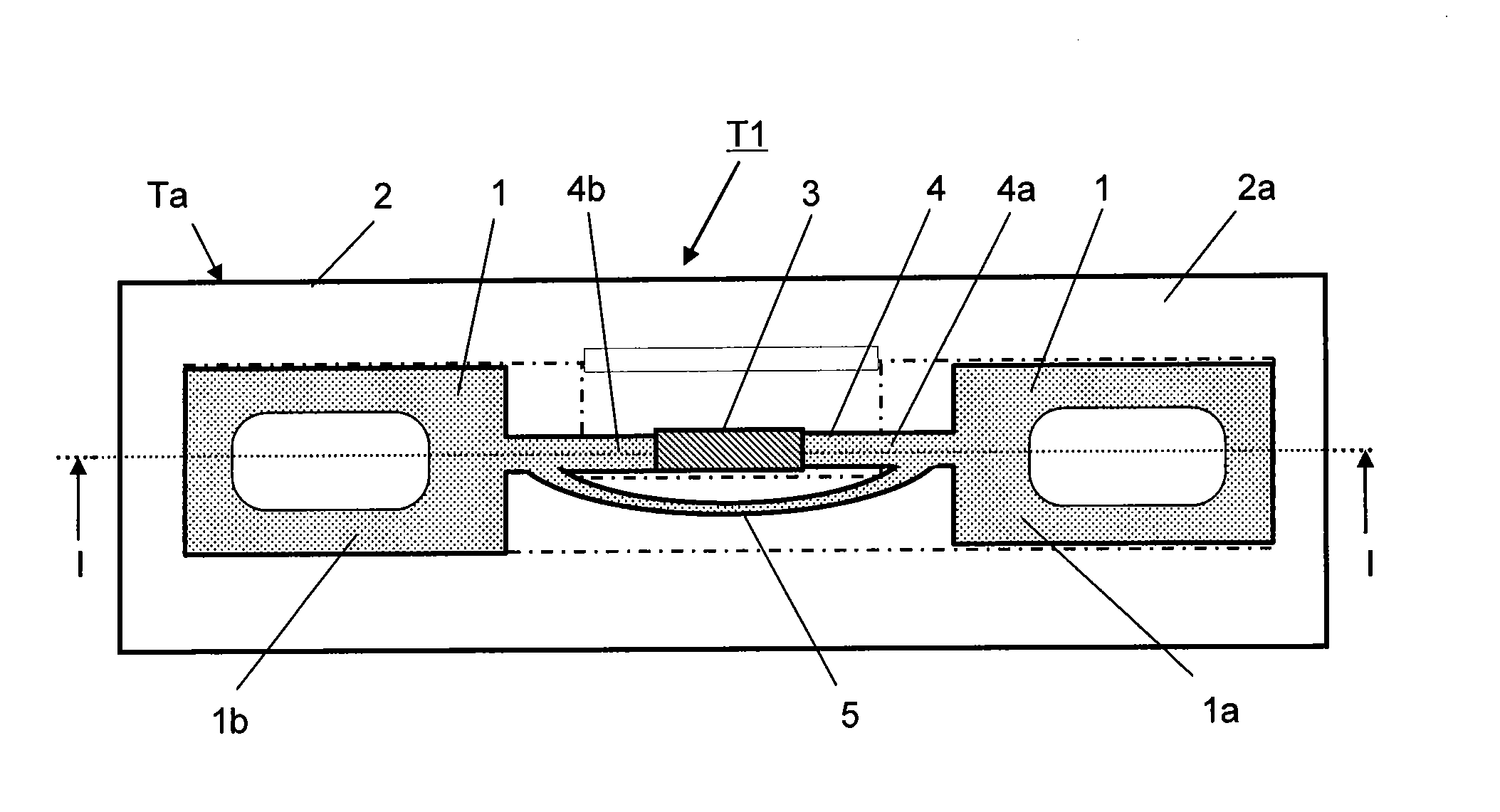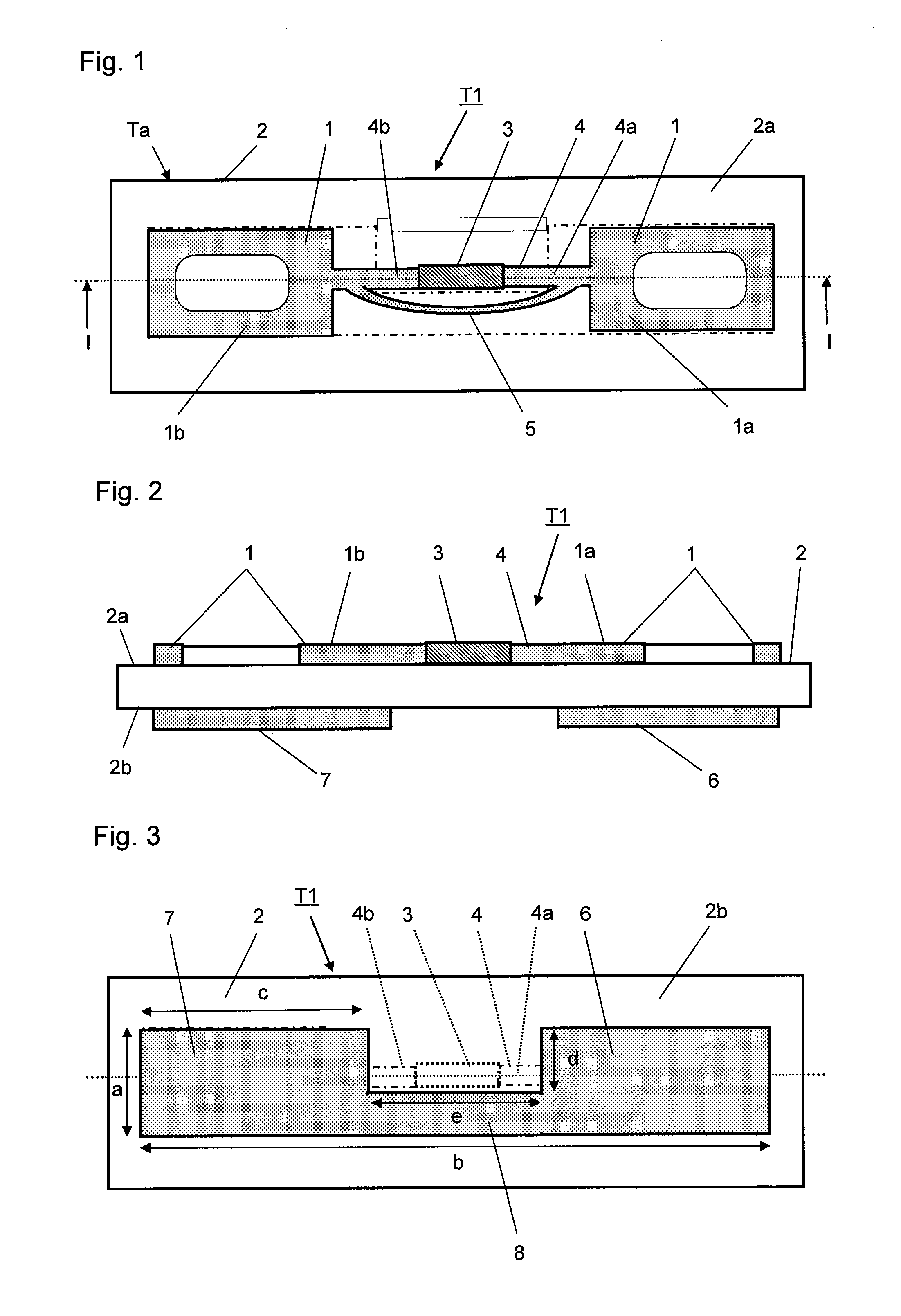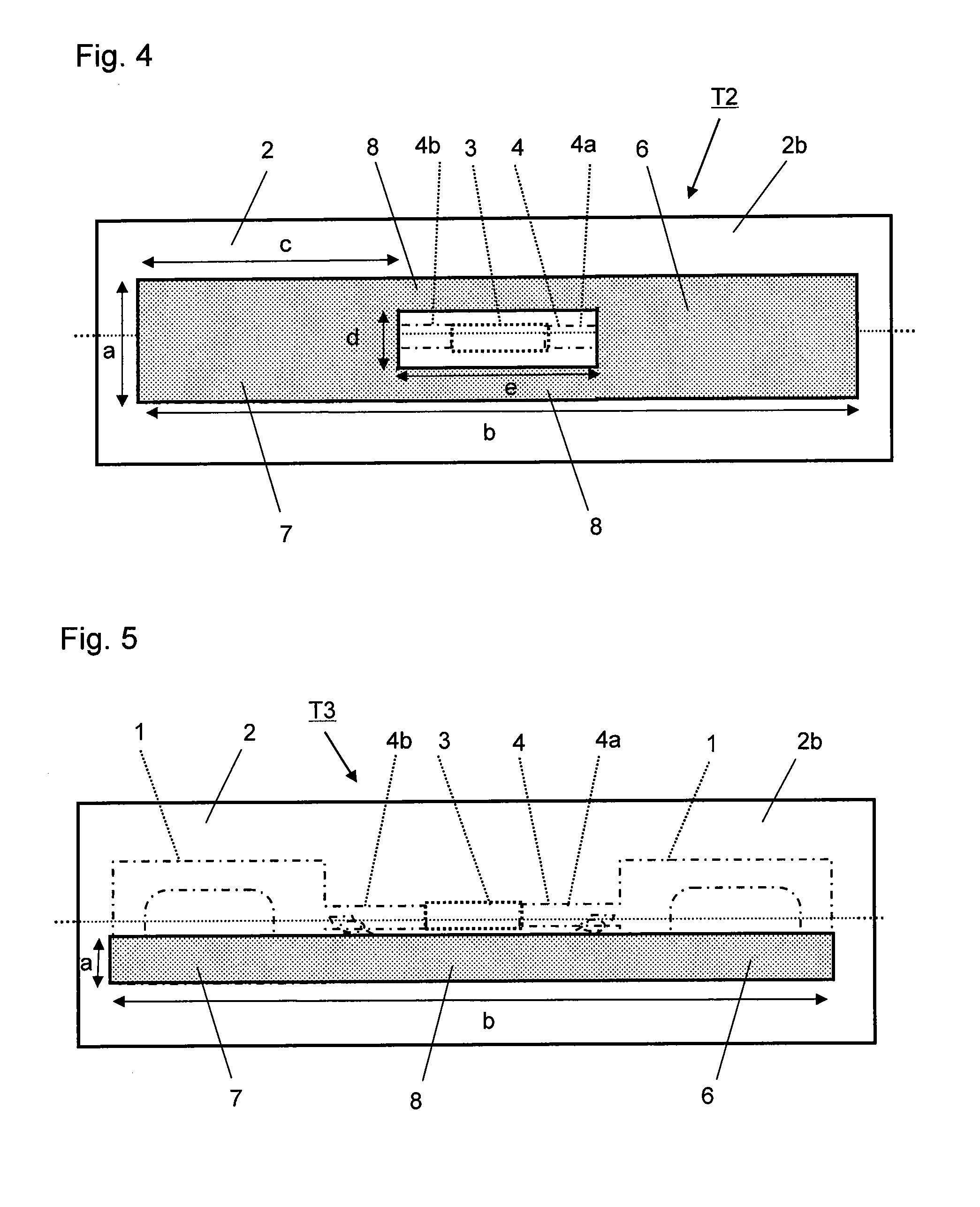Non-contact IC tag
a technology of ic tags and resonant antennas, applied in the structural forms of radiating elements, instruments, resonant antennas, etc., can solve the problems of short communication distance, ensuring long distance communication, and supply of electric power, and achieve the effect of increasing communication distan
- Summary
- Abstract
- Description
- Claims
- Application Information
AI Technical Summary
Benefits of technology
Problems solved by technology
Method used
Image
Examples
example 1
[0100]A bi-axially stretched polyethylene terephthalate film (Lumiror (registered trademark) S10 supplied by Toray Industries, Inc.) having a thickness of 0.05 mm was used as the first insulating substrate 2. To produce a metallized film, an aluminum layer having a thickness of 0.002 mm was formed by electron beam (EB) deposition over one side of the first insulating substrate 2.
[0101]The resulting metallized film was subjected to wet etching to produce a parasitic antenna having a shape as shown in FIG. 3. The sizes shown in FIG. 3 were as described below: a=8 mm, b=97 mm, c=43.5 mm, d=4 mm, and e=10 mm. The first parasitic antenna 6, second parasitic antenna 7, and connected portion 8 were thus formed.
[0102]A UHF tag Ta (ALN-9540-Squiggle supplied by Alien) having an IC chip 3 and a matching-circuit equipped dipole antenna 1 was prepared. An acrylic plate having a thickness of 1 mm was used as a second insulating substrate 9, and the UHF tag Ta was adhered to it. Then, the first s...
example 2
[0108]The metallized film obtained in Example 1 was subjected to wet etching to produce a parasitic antenna having a shape as shown in FIG. 4. The sizes shown in FIG. 4 were as described below: a=8 mm, b=97 mm, c=43.5 mm, d=4 mm, and e=10 mm. The first parasitic antenna 6, the second parasitic antenna 7, and the connected portion 8 were thus formed. The resulting metallized film and the second insulating substrate produced in Example 1 were fixed together by the same procedure as in Example 1 to provide a non-contact IC tag T2.
[0109]The resulting non-contact IC tag T2 had a communication distance of 690 mm.
example 3
[0110]The metallized film obtained in Example 1 was subjected to wet etching to produce a parasitic antenna having a shape as shown in FIG. 5. The sizes shown in FIG. 5 were as described below: a=4 mm and b=97 mm. The first parasitic antenna 6, the second parasitic antenna 7, and the connected portion 8 were thus formed. The resulting metallized film and the second insulating substrate produced in Example 1 were fixed together by the same procedure as in Example 1 to provide a non-contact IC tag T3.
[0111]The resulting non-contact IC tag T3 had a communication distance of 790 mm.
PUM
 Login to View More
Login to View More Abstract
Description
Claims
Application Information
 Login to View More
Login to View More - R&D
- Intellectual Property
- Life Sciences
- Materials
- Tech Scout
- Unparalleled Data Quality
- Higher Quality Content
- 60% Fewer Hallucinations
Browse by: Latest US Patents, China's latest patents, Technical Efficacy Thesaurus, Application Domain, Technology Topic, Popular Technical Reports.
© 2025 PatSnap. All rights reserved.Legal|Privacy policy|Modern Slavery Act Transparency Statement|Sitemap|About US| Contact US: help@patsnap.com



